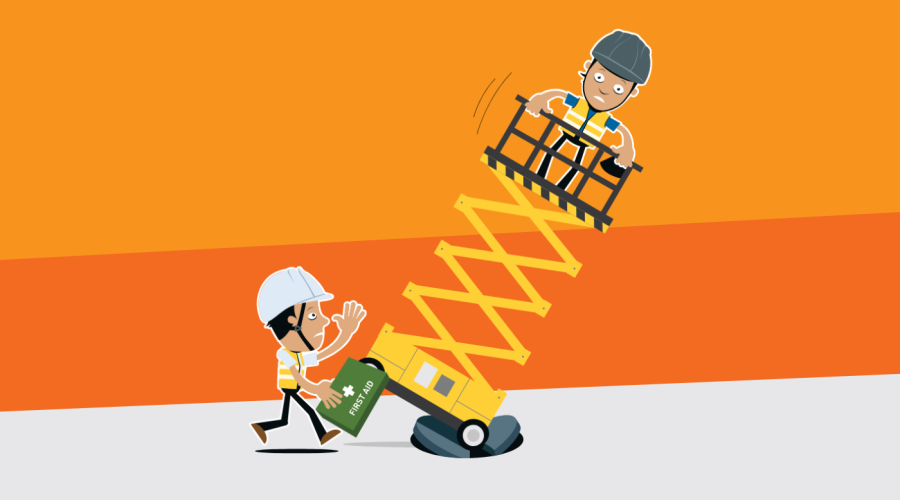United States - MEWP Regulations and Standards
Resource also available in:
Information on, and links to, the United States regulations and standards for Mobile Elevating Work Platforms (MEWPs), formally known as Aerial Work Platforms (AWPs).
OSHA Regulation
- www.osha.gov - All regulations, letters of interpretation, safety tips and other resources are found and available for free.
- OSHA 1926 Subpart “L” Subpart title: Scaffolds, 1926.453 Aerial Lifts
- OSHA 1910 Subpart ”F” Subpart title: Powered Platforms, Manlifts, and Vehicle-Mounted Work Platforms, 1910.67 Vehicle-mounted elevating and rotating work platforms
Fall Protection Requirements:
- OSHA 1926 Subpart ”M” Subpart title: Fall Protection, 1910.500-503 Vehicle-mounted elevating and rotating work platforms
- OSHA 29 CFR 1910 Subparts D,F, I (1910.23, 66, 67, and 132)
OSHA Letters of Interpretation:
Standard Interpretations are letters or memos written in response to public inquiries or field office inquiries regarding how some aspect of or terminology in an OSHA standard or regulation is to be interpreted and enforced by the Agency. These letters provide guidance to clarify the application of an established OSHA standard, policy, or procedure, but they may not, in themselves, establish or revise OSHA policy or procedure or interpret the OSH Act. They must specifically cite the source policy or procedure document they interpret. LoI for 1926.453 can be found on the flowing link:
www.osha.gov/laws-regs/standardinterpretations/standardnumber/1926/1926.453%20-%20Index/result
Specific sample regarding fall protection on scissor lifts and which OSHA standard addresses scissor lifts is in the links below:
- www.osha.gov/laws-regs/standardinterpretations/1998-07-21
- www.osha.gov/laws-regs/standardinterpretations/2000-08-01-0
State Plans
State Plans are OSHA-approved workplace safety and health programs operated by individual states or U.S. territories. There are currently 22 State Plans covering both private sector and state and local government workers, and there are six State Plans covering only state and local government workers. State Plans are monitored by OSHA and must be at least as effective as OSHA in protecting workers and in preventing work-related injuries, illnesses and deaths. Most State Plans have adopted Federal OSHA regulations and standards verbatim. States such as California, Michigan, Oregon and Washington have State Plans that differ significantly from Federal OSHA. These states have standards that are more stringent than Federal OSHA standards or address hazards not covered by Federal OSHA.
Mobile Elevation work Platform (MEWP/AWP) Industry standards
Scaffold and Access Industry Association (SAIA) ANSI A92 standard Secretariat: website www.saiaonline.org/ansi ANSI a92 Standards and Manuals of Responsibilities can be purchased from this website.
- ANSI A92.2 – 2021 Vehicle Mounted Elevating and Rotating Aerial Platform
- ANSI A92.7 – 2014 Airline Ground Support Vehicle-Mounted Vertical Lift Device
- ANSI A92.20- 2021 Design Calculations, Safety Requirements and Test Methods for Mobile Elevating Work Platforms (MEWPs)
- ANSI A92.22- 2018 Safe Use of Mobile Elevating Work Platforms (MEWPs)
- ANSI A92.24- 2021 Training Requirements for the Use, Operation, Inspection, Testing and Maintenance of Mobile Elevating Work Platforms (MEWPs)
The SAIA manual of responsibilities for A92.22 - A92.24 provides a checklist for each section of the safe use and training standard that identifies responsibilities. This Manual includes a copy of all of the language within the safe use and training standard. A copy is required to be stored as an integral part of all MEWPs in operation.
The American Society of Safety Professional (ASSP) ANSI Z359 Fall Protection Standard Secretariat: website www.assp.org/standards ANSI Z359 Standards can be purchased from this website.
The ANSI/ASSP Z359 standards address fall protection equipment and systems for climbing, work positioning, fall arrest, rescue, evacuation and other fall hazard operations, as well as training, hazard identification and abating hazards to help prevent injuries and illness when working at height.
- ANSI/ASSP Z359 Fall Protection and Arrest Standards Package
- ASSP Z359.0-2018 Z359 Committee Guidance Document for Definitions and Nomenclature Used in Z359 Fall Protection and Fall Restraint Standards
- ANSI/ASSP Z359.1 - 2016 The Fall Protection Code - Digital Only
- ANSI/ASSP Z359.2 – 2017 Minimum Requirements for a Comprehensive Managed Fall Protection Program
- ANSI/ASSP Z359.3-2017 Safety Requirements for Lanyards and Positioning Lanyards
- ANSI/ASSP Z359.4-2013 Safety Requirements for Assisted-Rescue and Self-Rescue Systems, Subsystems and Components
- ANSI/ASSP Z359.6-2016Specifications and Design Requirements for Active Fall Protection Systems
- NSI/ASSP Z359.7-2011 Qualification and Verification Testing of Fall Protection Products
- ANSI/ASSP Z359.11-2014 Safety Requirements for Full Body Harnesses
- ANSI/ASSP Z359.12-2009 Connecting Components for Personal Fall Arrest Systems
- ANSI/ASSP Z359.13-2013 Personal Energy Absorbers and Energy Absorbing Lanyards
- ANSI/ASSP Z359.14 2014 Safety Requirements for Self-Retracting Devices for Personal Fall Arrest & Rescue Systems
- ANSI/ASSP Z359.15-2014 Safety Requirements for Single Anchor Lifelines and Fall Arresters for Personal Fall Arrest Systems
- ANSI/ASSP Z359.16-2016 Safety Requirements for Climbing Ladder Fall Arrest Systems
- ANSI/ASSP Z359.18-2017 Safety Requirements for Anchorage Connectors for Active Fall Protection Systems
